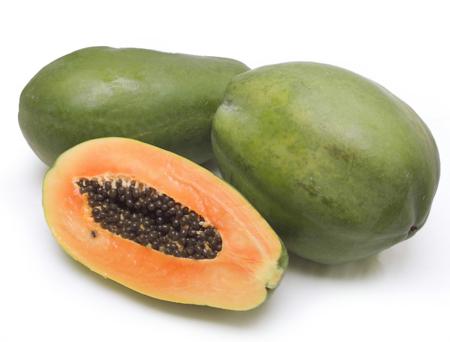The papaya originated in Central America, and came to the Philippines during the Spanish occupation of this country. The fruit eventually spread throughout South-East Asia. The papaya tree bears only either male or female flowers with the female tree producing the fruits. Consequently, the male tree must be close by to pollinate the female flowers.
The papaya fruits are large, weighing up to 9 kg and often look like a large squash. The skin is thin like those of the watermelon and turns from green to yellow and orange as the fruit ripens. The flesh of the papaya may be yellow, orange, or reddish orange and has a consistency of a very ripe (soft) cantaloupe. Papayas are sweet and are used as dessert.
Papaya fruit is a rich source of nutrients such as provitamin A carotenoids, vitamin C, B vitamins, lycopene, dietary minerals and dietary fibre. Papaya skin, pulp and seeds also contain a variety of phytochemicals, including natural phenols. Danielone is a phytoalexin found in the papaya fruit. This compound showed high antifungal activity against Colletotrichum gloesporioides, a pathogenic fungus of papaya.
In Vietnam, many popular dishes using green papaya as Green papaya and pig ear salad, Thai papaya salad, a salad like dish with shredded green papaya and shredded beef jerky eaten with a special hot sauce.

